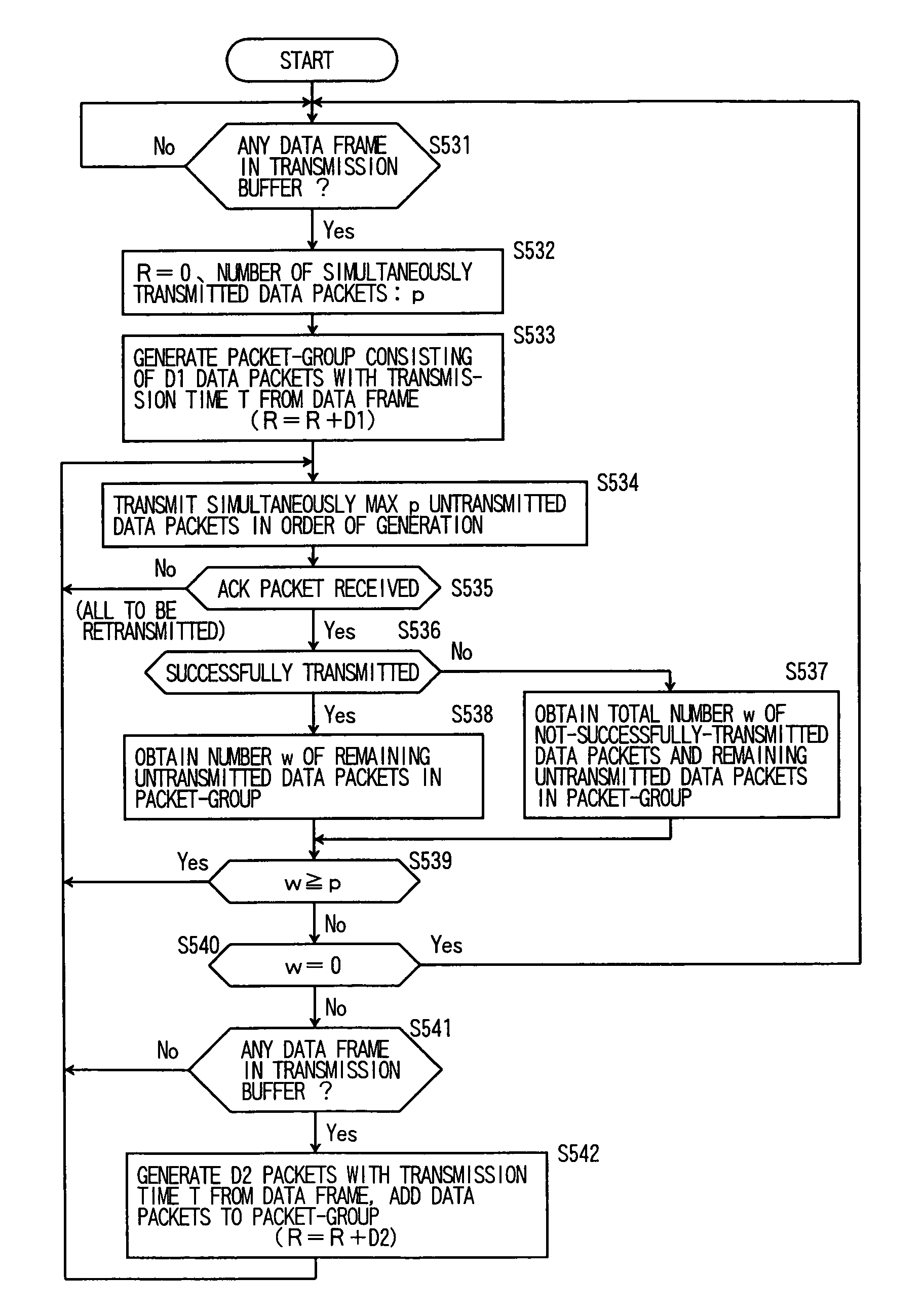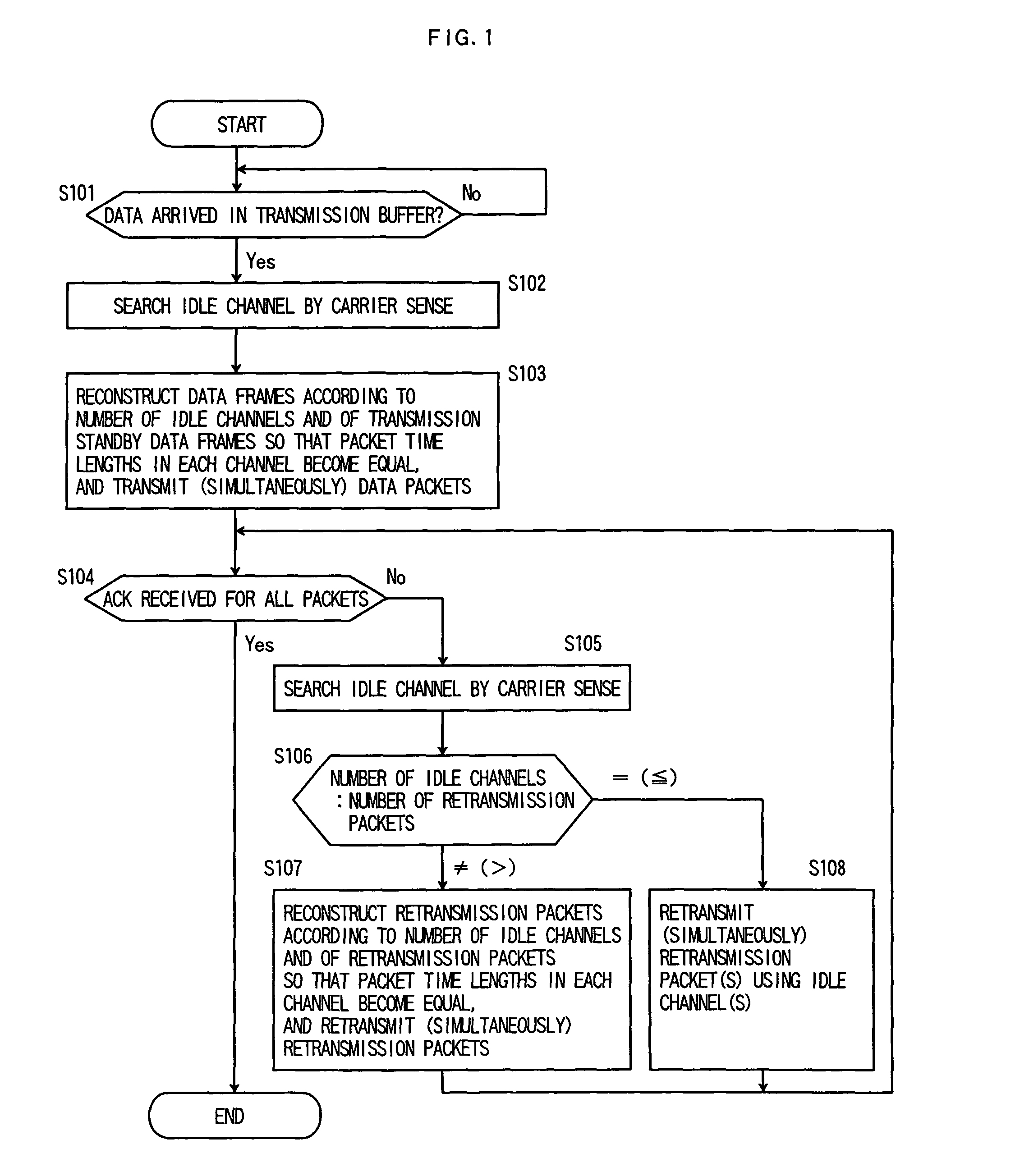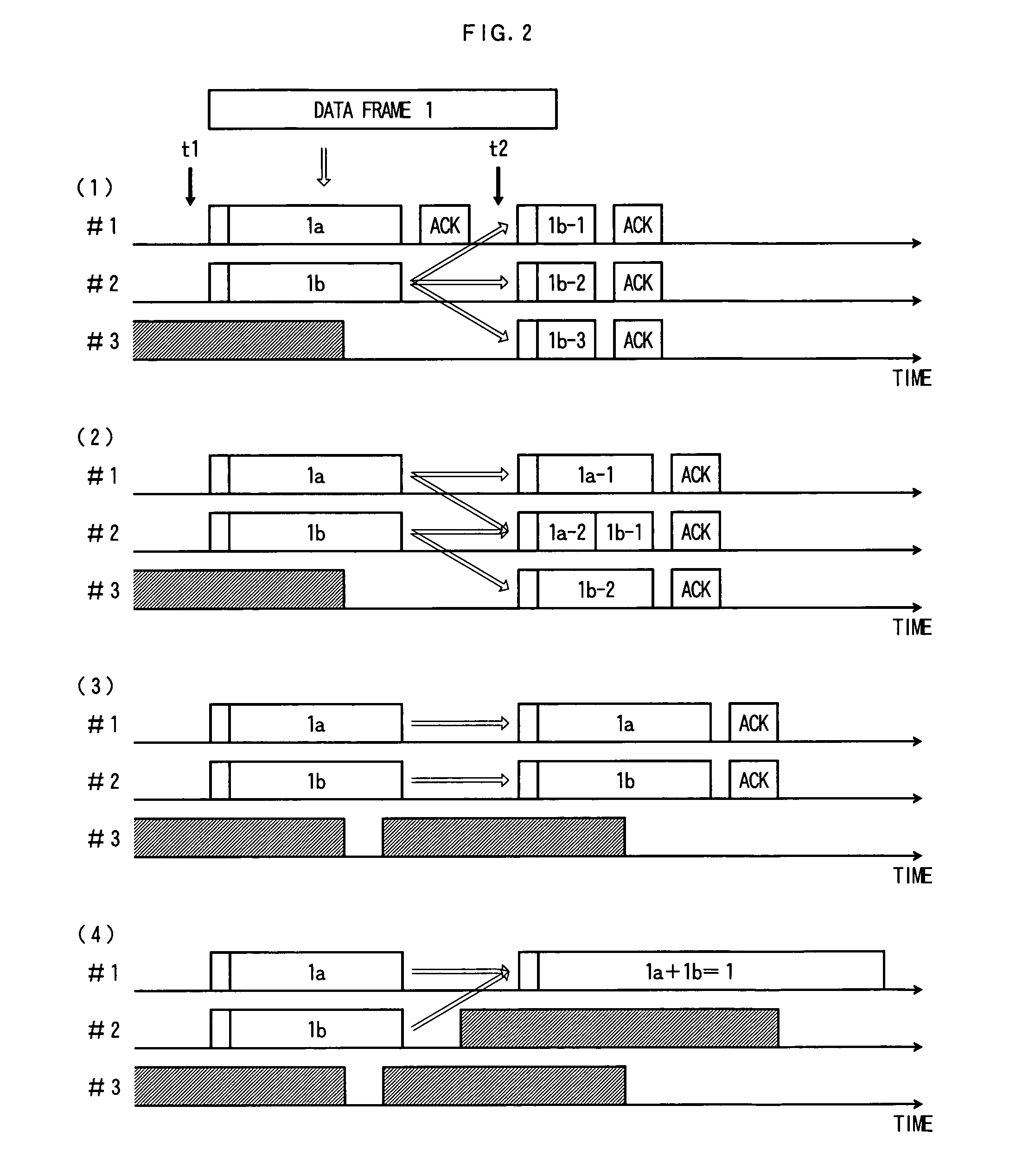Wireless packet communication method and wireless packet communication apparatus
a wireless packet and communication method technology, applied in the field of wireless packets, can solve the problems of preventing the reception of ack packets, affecting the influence of the leakage power of the other wireless channel being used for simultaneous transmission, and no improvement in throughput can be expected
- Summary
- Abstract
- Description
- Claims
- Application Information
AI Technical Summary
Benefits of technology
Problems solved by technology
Method used
Image
Examples
tenth embodiment
[0158]FIG. 13 shows a flowchart of a tenth embodiment of the present invention. This embodiment is characterized in that simultaneous transmission using multiple wireless channels or simultaneous transmission using a MIMO system is selected according to the number of data arriving in a transmission buffer or the number of MIMOs that depends on a channel condition (S231). In response to this selection, the data is reconstructed to packets with the same length according to the number of the idle channels (or the number of MIMOs), and the reconstructed packets are assigned to the respective wireless channels (or respective antennas of the MIMO) to be (simultaneously) transmitted (S232).
[0159]Next, it is confirmed for all the simultaneously transmitted packets whether or not ACK packets are received within a predetermined time after the transmission (S204), and a packet for which the ACK packet is not received within the predetermined time is subjected to retransmission processing (S205...
eleventh embodiment
[0165]FIG. 15 shows a flowchart of an eleventh embodiment of the present invention. FIG. 16 shows an operation example of the eleventh embodiment of the present invention. It is assumed here that wireless channels #1, #2, #3 are prepared.
[0166]When data arrives in a transmission buffer, it is first searched by carrier sense if there is any idle wireless channel (S301, S302). In FIG. 16, at a timing the data is generated t1, the wireless channel #3 is busy, and the wireless channel #1 and the wireless channel #2 are retrieved as idle. Next, according to the number of the idle channels and the number of transmission-standby data packets, packets are generated by, for example, any one of the methods shown in FIG. 49, so that the packet time lengths in the respective wireless channels become equal, and the data packets are assigned to the respective wireless channels to be (simultaneously) transmitted (S303).
[0167]In the example shown in FIG. 16, which is a case where there are three da...
twelfth embodiment
[0175]FIG. 17 and FIG. 18 show flowcharts of a twelfth embodiment of the present invention.
[0176]FIG. 17 shows processing in a transmit-side STA and FIG. 18 shows processing in a receive-side STA. FIG. 19 shows an operation example of the twelfth embodiment. It is assumed here that wireless channels #1, #2, #3 are prepared. This embodiment is characterized in that a NAV is set not from the transmit-side STA but from the receive-side STA.
[0177]In the transmit-side STA, when data arrives in a transmission buffer, it is first searched by carrier sense if there is any idle wireless channel (FIG. 17: S301, S302). Next, according to the number of the idle channels and the number of transmission-standby data packets, data packets are generated by, for example, any one of the methods shown in FIGS. 49 so that the packet time lengths in the respective wireless channels become equal, and the data packets are assigned to the respective wireless channels to be (simultaneously) transmitted (FIG....
PUM
 Login to View More
Login to View More Abstract
Description
Claims
Application Information
 Login to View More
Login to View More - R&D
- Intellectual Property
- Life Sciences
- Materials
- Tech Scout
- Unparalleled Data Quality
- Higher Quality Content
- 60% Fewer Hallucinations
Browse by: Latest US Patents, China's latest patents, Technical Efficacy Thesaurus, Application Domain, Technology Topic, Popular Technical Reports.
© 2025 PatSnap. All rights reserved.Legal|Privacy policy|Modern Slavery Act Transparency Statement|Sitemap|About US| Contact US: help@patsnap.com



